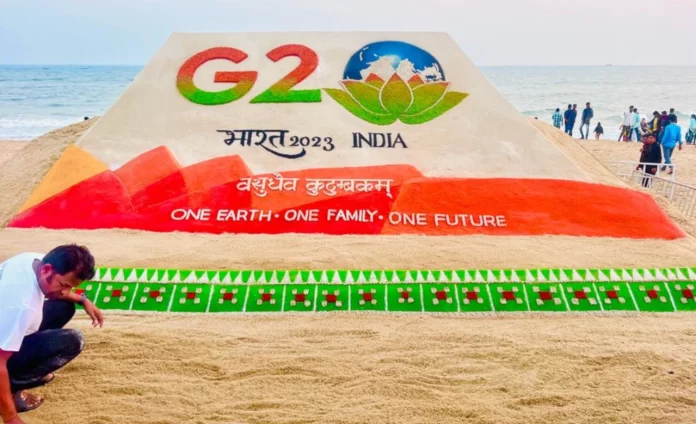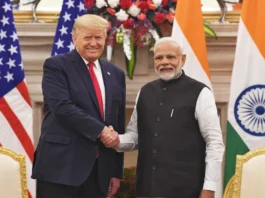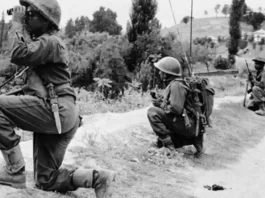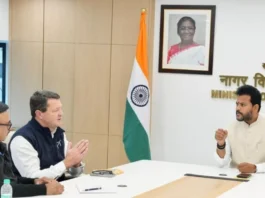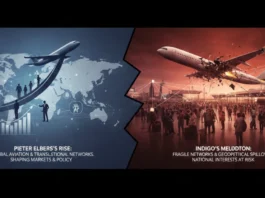India is a vibrant, democratic, developing, secular country aspiring to be a global leader with the G20 Presidency with the theme of ‘Vasudhaiva Kutumbakam or ‘One Earth One Family One Future’ elucidated from PM Nehru to PM Modi, laying emphasis that the world is one family signifying the country’s global outlook universal Indian values of all forms of life on the planet Earth.
India geographically is the 7th largest country in the world with a total area of 3,287,590 sq km area with a land mass of 2,973,190 sq km and the 2nd most populous country, soon likely to beat China for the first notch. GDP wise, it is the world’s fifth largest economy while 3rd in PPP ranking though, we are 142nd in ranking on per capita income basis. With modest nuclear capability, India has the 4th largest Army and Air Force, while its Navy is the 7th largest in the world. Notwithstanding its size and threat perception from land, air, sea and internal security, there needs to be more in its holding of modern equipment and a long-range delivery system for its nuclear arsenal. India is an emerging world leader in nuclear, space and IT. India’s geo-strategic location, size, population, economy, industrial development and potential at the head of the Indian Ocean-the only ocean bearing the country’s name, with immense strategic significance that helps in maintaining close contact with Latin America, the US, Europe, West Africa, West Asia, Southeast Asia, Indo-Pacific Region and the rest of the world. It has 7,516.6 km of coastline of the mainland, Lakshadweep Islands and Andaman & Nicobar Islands and a major country in South Asia, separated from mainland Asia by the mighty Himalayas. Geo-strategically, India is centrally located on the main blue water trade route between Europe and the Far East, along with being equally significantly linked in the global air routes. India assumes G20 leadership realising its potential to bring order in otherwise uncertain realities the world over, especially those surrounding India viciously. Sadly, our country, with tremendous potential, could be a world power but for its location, surrounded mostly by a very uncertain hostile environment around its periphery retarding its progress. But the dynamic leadership coupled with India’s geo-strategic, economic, diplomatic, industrial, cultural and spiritual values strengthen the country to lead the world from the shadows of uncertainties, much closer to universal brotherhood.
After the demise of 22-year-old Mahsa Amini on September 16, 2022, for not wearing her hijab properly and donning skinny jeans, the entire environment in our western periphery has been rocked by the largest protests in years over clergy imposing dress and behaviour codes on the young. These protests have spread from the Persian Gulf to Pakistan. Iranians of all age groups, ethnicities and genders have joined widespread demonstrations all over the country, with over 300 deaths and a lot more injured in security forces atrocities. Some US-supported Iranian human rights activists have said that 451 protesters and 60 security forces personnel have been killed since protests started, and 18,000 people have been detained. The modern generation so much detests the compulsion of wearing hijab and burqa that the Iranian football team in their FIFA World Cup match did not sing their national anthem prior to their match with the US team to express their solidarity with the ongoing massive protests in their country, thus, posing serious threats to the ruling clerics since the 1979 revolution which brought them to power. Many protestors showed their jubilance at Iran’s team’s elimination from the world cup as many women burnt their burqas and hijabs, dancing in the streets simultaneously. In contrast, others cut off their long hair. Schools, colleges, universities and markets were closed, and the industrial and economy were adversely hit, which could impact crude oil production, adversely affecting supplies to users, including India, at higher rates.
Meanwhile, the niece of Ayatollah Khomeini has urged other nations to sever diplomatic relations with Iran. The daring Iranian football team’s decision to forgo singing the national anthem during the FIFA World Cup in Qatar successfully drew attention to the domestic protests on a global scale. Much to the chagrin of the US and other western nations, Iran has been quietly developing nuclear weapons while also putting four people to death for collaborating with Israeli intelligence. While India maintains good relations with Iran, which was its neighbour till the partition of the county in 1947, India has often been in a diplomatic dilemma over Iran’s relations over its covert nuclear programming and crude oil production, pricing and supplies. India, therefore, chooses the middle path over its ties with Iran over its complex relationship with the US.
Iran was following western culture and toeing the lines of the US and UK during the rule of Shah Mohammad Reza Pahlavi, which was disapproved by the fundamentalists. Shah had long visualised fast industrial and military modernisation and western-style economic, social, and political changes intended to make Iran a modern and developed nation similar to any advanced European country. The political unrest led by Mohammad Mosaddegh, who was the Prime Minister of Iran from 1951 to 1953, resulted in the nationalisation of the Anglo-Iranian Oil Company (AIOC) and the loss of jobs for a large number of Indians employed in the refinery and other places, until the US and British intelligence services led to his ouster in the 1953 Iranian coup d’état, to strengthen Shah’s monarchy, which was supported by the Shia clergy. But the unrest and discontent against Shah led by the clergy continued, eventually leading people in Iran to a national referendum to become an Islamic republic on April 1, 1979, under the supreme Shia leader Khomeini while Shah fled to the US. Ever since, Iran has been a theocratic state much detested by the West for surreptitiously becoming a nuclear power, much to the discomfort of the US, Western countries, Israel and the Middle East.
Historically, traditionally and culturally, India and Iran have cordial trade relations though India did not appreciate the 1979 Revolution. It is felt President Ebrahim Raisi is not trying to quell protests ruthlessly so that they do not take an ugly turn like the ones that ousted Shah in 1979. India gets around 20% of its oil needs from Iran and is endeavouring to develop significant trade ties, particularly in meeting India’s oil needs. India is also developing Chabahar Port, about 170 km west of the Pakistani port of Gwadar, to access Afghan and Central Asian markets without relying on hostile Pakistan’s land routes and to counterbalance China-Pakistan Economic Corridor (CPEC) to find alternative options to reach Afghanistan and Central Asian Republics (CARs).
The Saudi Arabian crown prince and prime minister, Mohammed bin Salman, is implementing social, religious and cultural reforms in a feudal autocratic mediaeval monarchy. Like Iran, Saudi Arabia continues to suffer from autocratic clergy, Muslim fundamentalism, lack of freedom for women, and human rights abuses, as well as its failure to provide full accountability for the October 2018 murder of dissident Saudi journalist Jamal Khashoggi by Saudi agents. There is a sort of cold war in the Middle East as Iran-Saudi Arabia are in conflict to become the most powerful and authoritative nation in the Muslim world, besides the religious differences between the two- Wahhabi Sunni Saudi Arabia and Shia Iran and rivalry over the crude oil production, pricing and its export. Saudi Arabia is also concerned over its dwindling income from the drop in oil prices, Islamic terrorism, the military intervention in Yemen, and hostile relations with Iran, which adversely affects regional stability. India is friends of the rival neighbouring oil-producing countries in the Middle East. Incidentally, Saudi Arabia is one of the members of the G20 club.
Our relations with Pakistan have been worse ever since its inception from India over multiple issues, but primarily concerning its illegally occupying parts of J&K, which is constitutionally, legally and ethically part and parcel of India. Terrorism, treatment of minorities, especially Hindus, Sikhs, and Christians and ill-treatment of Ahmedias, Boras, Shia- Sunni divide, Siachen, Sir Creek and boundary and river water disputes are the other worse irritants that led to fighting three major wars in 1947, 1965 and the Bangladesh Liberation War in 1971 besides the Kargil War and numerous cross border terror attacks like 26/11, ceasefire violations, territorial disputes, smuggling of drugs, arms, ammunition and explosives, fake Indian currency notes (FICN) etc. In 2019, the bilateral relationship was rocked by several tense events like the Pulwama terror attack, the Balakot airstrike, and the scrapping of article 370. There has been tremendous suspense and speculations lately over the appointment of Gen Asim Munir succeeding Gen Bajwa retiring after his extended tenure as Chief of the Army Staff (COAS). During PM Imran Khan’s tenure in 2019, Munir was removed from the post of the DG ISI within eight months of his appointment by PM Imran Khan and replaced with Lt Gen Faiz Hameed. Before that, he was Director of Military Intelligence. He is the first ‘mullah general’ to become COAS and is expected to be closer to numerous fundamentalist terror groups operating from Pakistan targeting India. His appointment will not make Imran Khan comfortable if he wins the general elections due next year, which as a serious development will have profound security implications for India. Much will depend on how the new chief conducts himself, as the Pakistan army is deeply involved in shaping the country’s politics and foreign policies. Nonetheless, improved bilateral relations between both countries would not only lead to peace and progress in South Asia but also optimise resources to fight poverty, illiteracy, malnourishment, diseases etc., ensuring India fully devotes to issues under deliberations as G20 President.
Since the overthrow of the last King Mohammed Zahir Shah of Afghanistan, who reigned from 8 November 1933 until he was ousted from power on 17 July 1973, the longest-serving ruler of Afghanistan for 40 years, the country has remained at an elevated risk of terrorist attacks, like the August 2022 bombing of a mosque in Kabul and the September 2022 bombing of the Russian Embassy in Kabul, both of which were allegedly carried out by the Islamic State. Numerous Taliban elements misrule the country, and there are far too many instances of unlawful executions, enforced disappearances, violations of the laws of war, violence against women, and attacks on the media and human rights workers. Terrorists pose a menace both inside and outside Afghanistan. Mr. Ajit Doval, National Security Advisor (NSA), is conducting a meeting of Central Asian Republics (CARs) in New Delhi to discuss the situation in Afghanistan; thus, it is not surprising.
India, Pakistan, China and Sri Lanka all gained independence during 1947-49. China is the largest, biggest and most economically, industrially, technologically and militarily strong nation. China and India are two powerful and most populous countries in Asia and are amongst the fastest developing essential economies in the world. The tone of their relationship has varied over time as these Asian giants seek economic cooperation over the wars. Notwithstanding the complex long border dispute, economic nationalism, political systems, human rights, individual freedoms and fundamental rights in both countries are the foremost factors of contention. Though India badly lost the 1962 Sino- Indian War, the subsequent military preparedness and economic and industrial development, in the Nathu La and Cho La clashes in 1967, the Chinese offensive was bluntly repulsed decisively to India’s advantage, with the Chinese suffering heavy casualties. The same was repeated in Doklam in 2017, and the Chinese realised the use of force against India two years back in eastern Ladakh that eyeball-to-eyeball confrontation, fisticuffs, death, and injuries to their security forces have far serious economic consequences between the two nuclear-armed trans-Himalayan neighbours. Likewise, Chinese naval expansionist activities in the South China Sea are being contained in the Indo-Pacific region by the Quad as the strategic security dialogue amongst Australia, India, Japan, and the US over maritime security issues.
Lately, Xi Jinping has been facing unprecedented protests by thousands of demonstrators in cities across the country against Xi’s zero-Covid strategy. Many have raised their voices openly, demanding his removal, thus diminishing his authority. The multiple protests have been joined by Uighur dissidents, students, citizens, and factory workers fed up with strict anti-virus measures. A huge show of force by the security forces was sought to deter further protests. At the same time, an unprecedented number of people were arrested, hampering production and stumbling the Chinese stock market. While many demanded greater individual freedom and were seen holding up blank white papers demonstrating their lack of free speech, protests in all likelihood will be quelled, but Xi and the Communist Party’s image have been dented, although the Hong Kong issue compounds it further. The US ambassador in China has stated that he believes the Chinese people have a right to protest peacefully. The protests may not bring the downfall of the Xi government. Still, they will force the government to view the human rights abuses and individual freedom in an autocratic rule to be liberalised to some extent. And yes, China is a member of the G20 Group.
Then there are other countries like Nepal, Bhutan, Bangladesh, Myanmar and Sri Lanka. The relations between India and Nepal are amicable. Nepal claims the Kalapani area of Pithoragarh district in Uttarakhand, but these localised irritants caused by misunderstandings or activities of anti-India elements are not insurmountable. Bhutan is a small but amiable country bordering China, and India has pledged to protect the country from any external threats. There are several major irritants between India and Bangladesh, like land and maritime boundary demarcation, exchange of enclaves, illegal migration, the balance of trade, transit and sanctuaries to Indian insurgent groups that are being resolved by our political leadership. India and Myanmar share a long 1,643 km geographical land border and maritime boundary, which is porous, poorly guarded and located along a remote, underdeveloped, insurgency-prone region proximate to the opium-producing area bordering our 4 Northeastern states of Mizoram, Manipur, Nagaland and Arunachal Pradesh. The Myanmar military’s coup, a deadly crackdown on protesters, and the arrest and dismissal of Nobel Peace Prize laureate Aung San Su Kyi sent shock waves beyond the country’s borders, touching off a rush of diplomacy and leading to the isolation of Myanmar from the world community. Away from these internal issues, relations between Myanmar are friendly. These localised problems can be resolved bilaterally and improve trade and diplomatic initiatives. Similarly, India is helping ‘strategically located’ Sri Lanka to recover from its collapsed economy and providing essential fuel, food, milk and medicines. India must not act as BIG BROTHER and ensure selective need basis help, so that these weaker countries are kept away from Chinese hunt and in no way adversely affect achieving our G20 goals and beyond.
The G20 meeting, an inter-governmental gathering of 19 nations plus the European Union, will be held in India (EU). Hosting it well will add to India’s stature and prestige as a vibrant democracy and economy addressing major issues related to the global economy and financial stability, ecological issues and sustainable development, covering 85% of the world GDP, 75% of international trade, and 2/3rd of world’s population. India would be inviting the heads of all the member countries, the UN, WHO, UNESCO, World Bank, WTO, IMF, African Union, International Solar Alliance (ISA) etc., besides special guests such as Bangladesh, Mauritius, Singapore, Spain, Egypt, Oman, UAE, Holland and Nigeria.
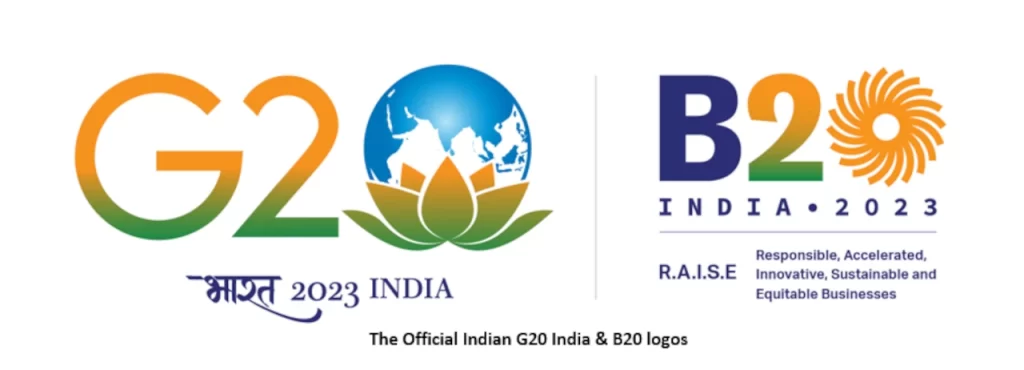
The official G20 platform for communicating with the world’s business community is Business 20 (B20). The B 20 Engagement Group includes businesses and business organisations as participants. The B20 will organise top business figures from around the world to share their opinions on matters of global trade and economic governance and speak on behalf of the G20 business community as a whole. The Confederation of Indian Industry (CII) coordinates 7 Task Forces (TFs) for areas like international trade and investment, digital transformation, financing for the recovery of the world economy, financial inclusion for economic employment, energy, climate change, and resource efficiency, as well as technical innovation and R&D, while there are also two Action Councils (ACs) that deal with ESG in business and African economic integration.
It is even more crucial to hold these events if the environment is unfavourable around India to fulfil the country’s lofty ideal theme of ‘One Earth, One Family, One Future’ and to ease tension in a volatile global environment to lessen conflict between people and ecological and natural disasters.
